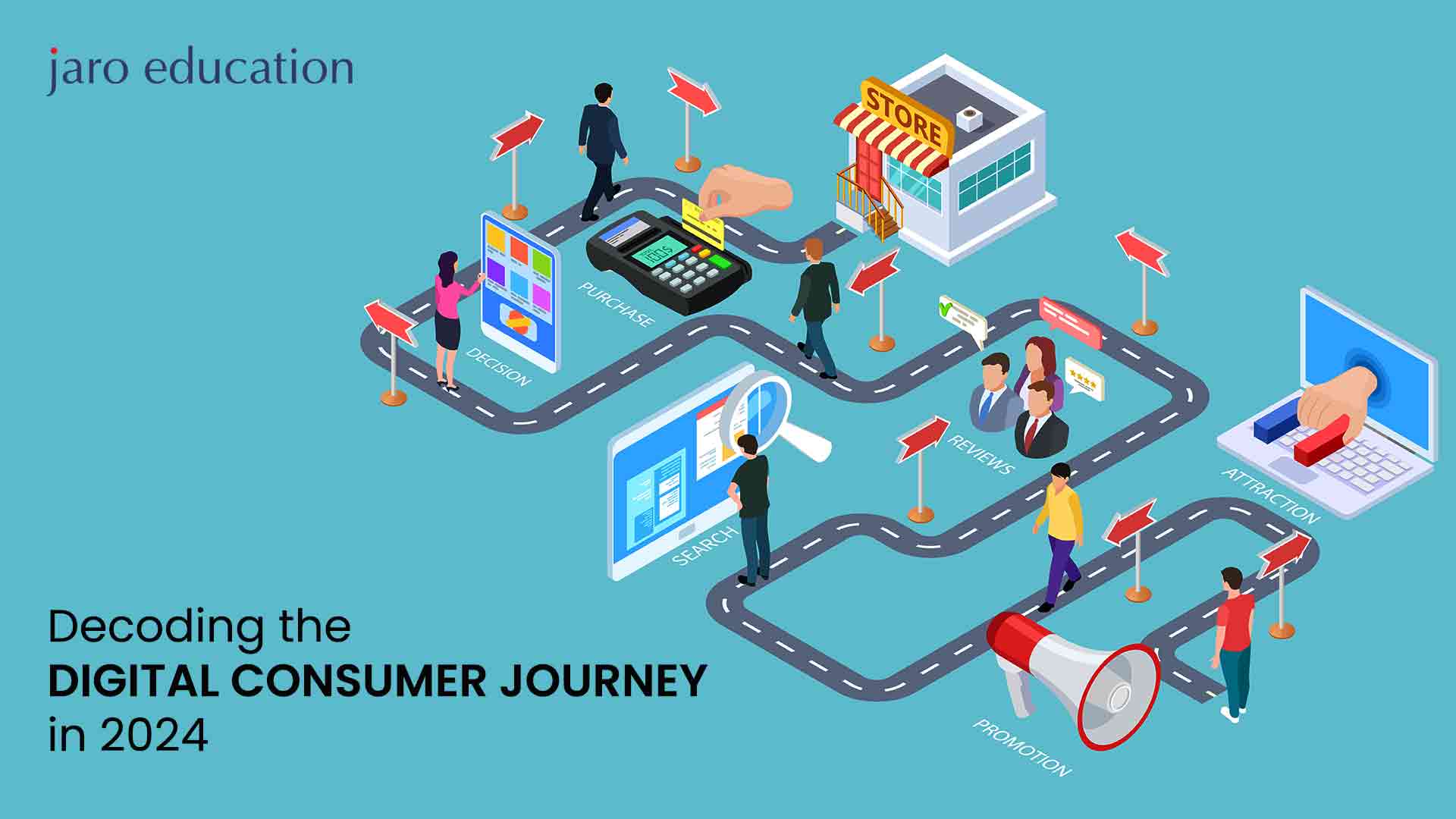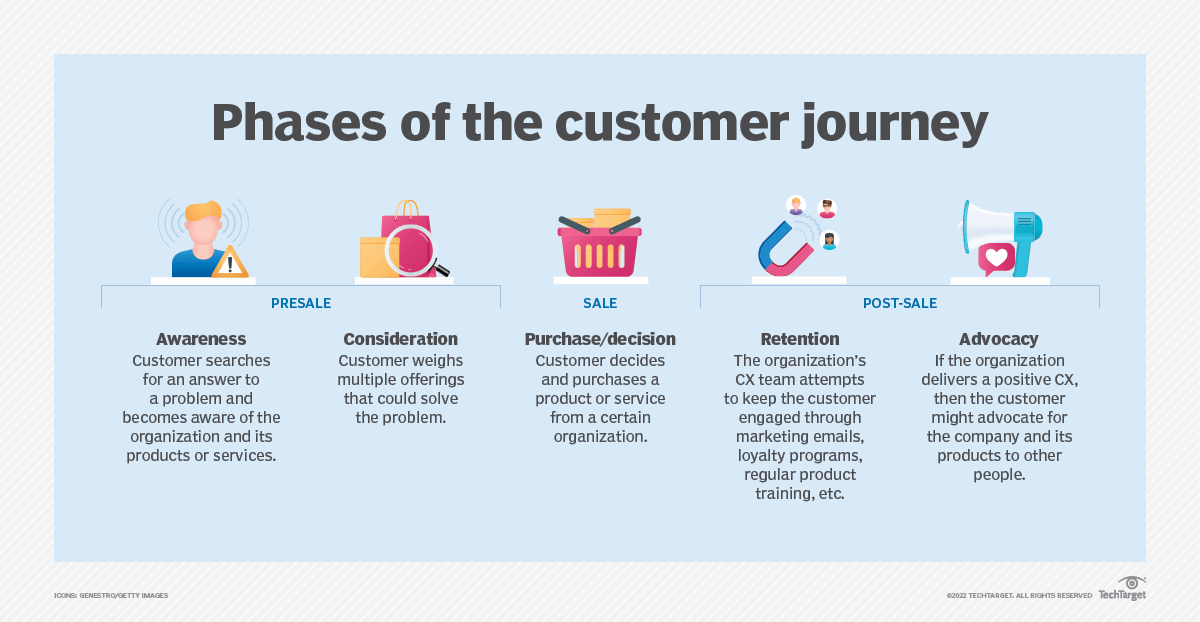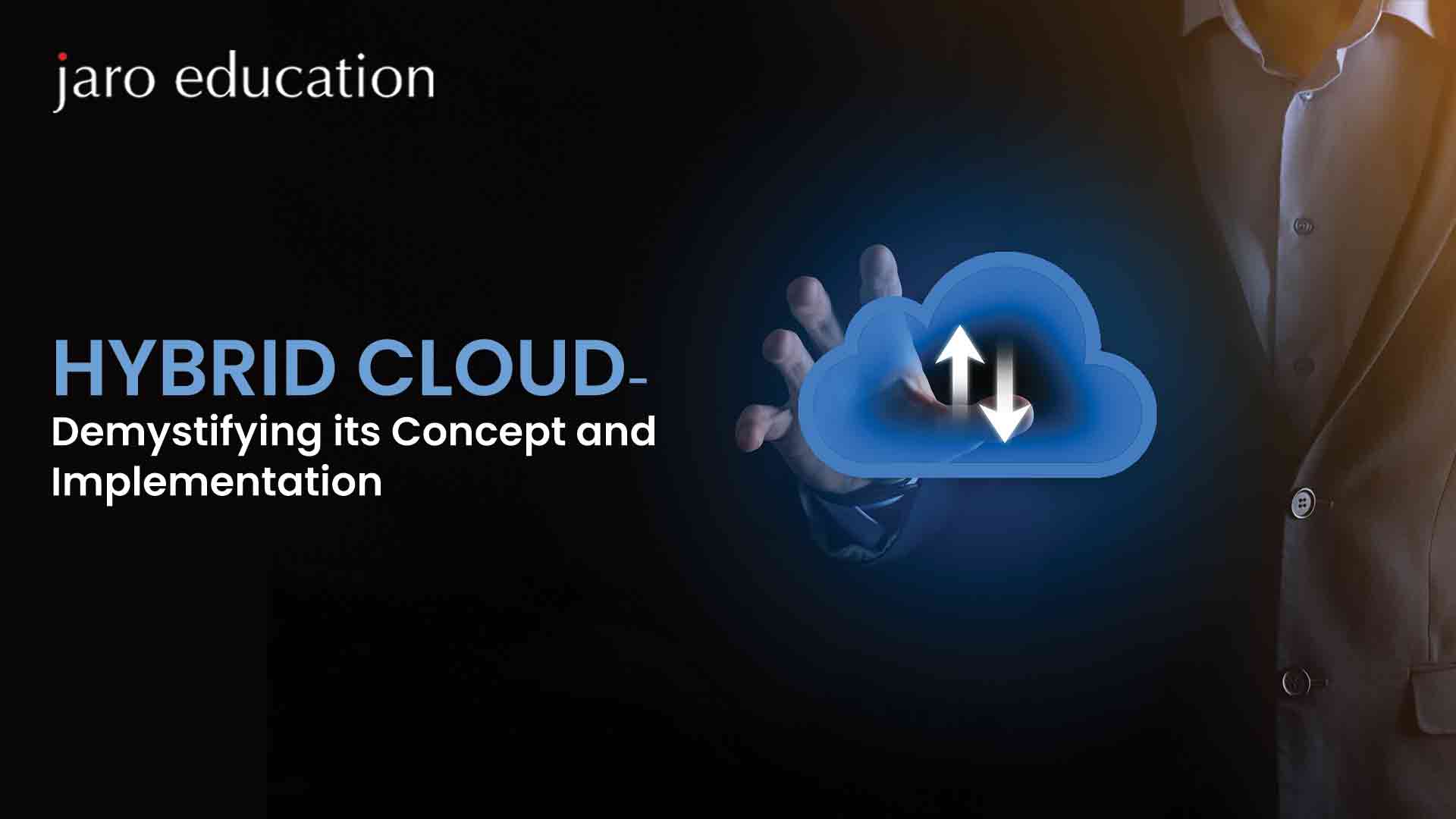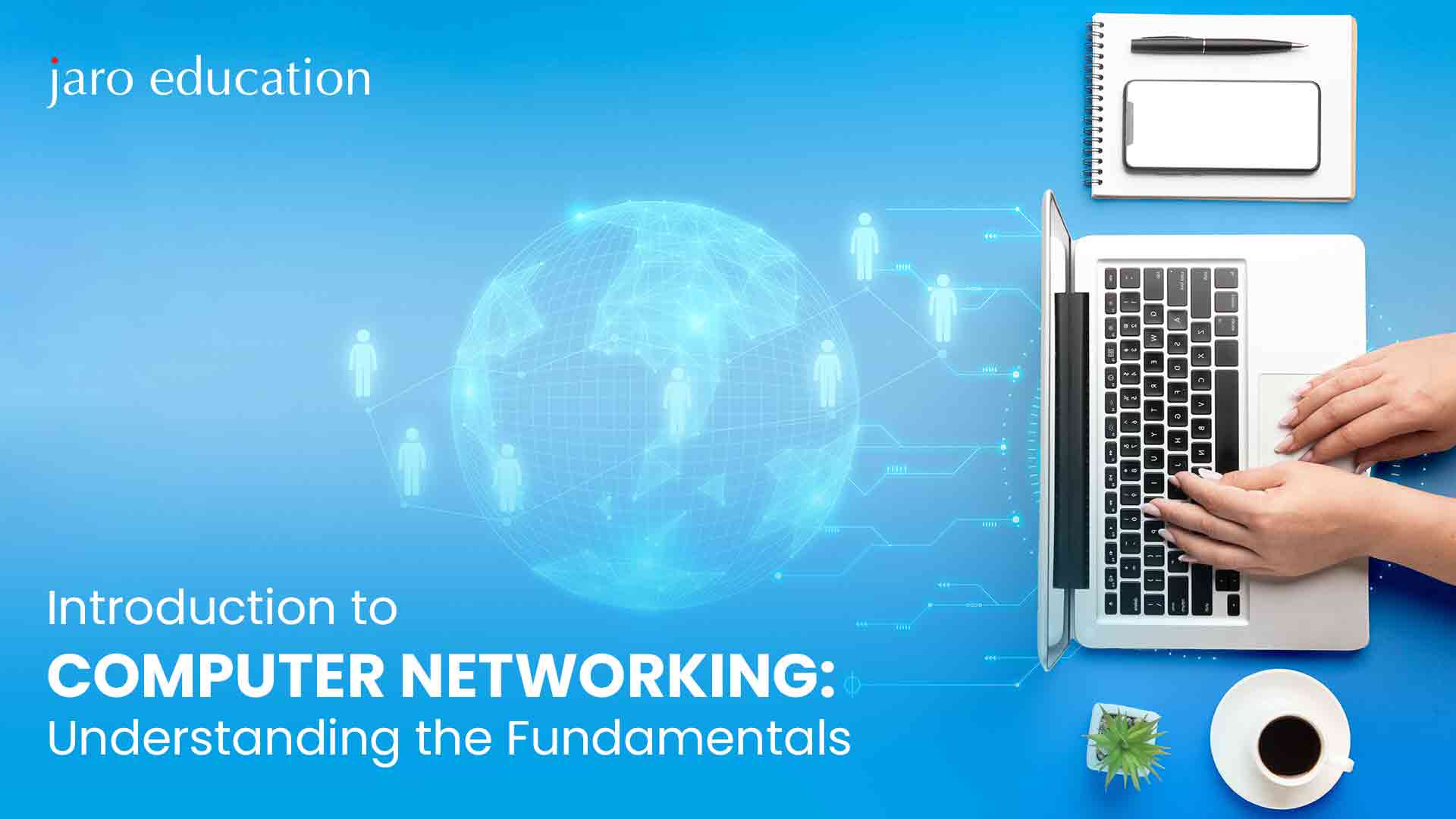Decoding the Digital Consumer Journey in 2024

- jaro education
- 11, January 2024
- 11:33 am
Earlier, banks and insurance companies used to focus on how customers went through their experiences due to the long relationships they built. But nowadays, every brand that recognizes the vast importance of the digital world is willing to delve deeper into the digital consumer journey.
With the rise of digital platforms, new steps have been added to this journey, like websites and blogs, alongside the traditional ways of shopping, TV ads, and catalogues. Social media, voice assistants, chatbots, and online ads have also joined in, making the digital consumer journey more complex.
Every industry experiences the customer journey differently. In a hospital, for instance, it’s called the “patient journey.” But a patient’s journey differs significantly from that of a person purchasing a new kitchen—from scheduling an online appointment to reviewing test results. This variety demonstrates the need to comprehend and enhance the many routes clients take in various circumstances.
In this blog, we’ll explore the main ideas and tactics that will influence how consumers interact with digital products in the upcoming year.
Table of Contents
What is Digital Consumer Journey?
The digital consumer journey (DCJ) is like a roadmap for users as they go from realizing they need something to actually getting it. This journey has five parts: awareness, thinking about it, buying, sticking around, and becoming a fan. The user’s decision to embrace or reject your product/service hinges on the emotions evoked during interactions with your brand across these five phases. A comprehensive understanding of user interactions, touchpoints, and each stage is best achieved through the lens of a meticulously crafted user journey map.
Each phase introduces various touchpoints—key junctures where the user intersects with the company. It’s crucial to recognize that the digital consumer journey is not a one-size-fits-all expedition; it dynamically adjusts based on the consumer type, leading to diverse relationships with these touchpoints.
Also, the digital consumer journey isn’t just about describing things—it’s a helpful tool. It’s the first step to improving things, boosting sales, and making customers happier. The digital consumer journey is like a pathway for businesses to make things better and keep customers happy. Understanding how it works is crucial for improvement. That’s where IIM Ahmedabad’s Digital Marketing Programme comes in. By joining, individuals can learn the ins and outs of digital marketing, gaining insights and strategies to enhance every step of the customer experience.
With IIM Ahmedabad’s Digital Marketing: Business Models, Processes and Technologies programme, professionals get the latest knowledge to meet the needs of today’s digital world. It’s an investment in skills that can boost sales and make customers feel satisfied. Being a part of this program positions individuals and businesses at the forefront of digital innovation and success.
5 Stages of the Digital Consumer Journey
TLet’s look at the different stages that a customer goes through at different digital touchpoints.
*techtarget.com
Awareness
The initial stage of the digital consumer journey unfolds customer awareness or discovery, where users become cognizant of a specific need. It’s important to note that “the need” in this context is a broad and dynamic concept.
Advertising is the most common way to get to the awareness phase in a fully digital process. This can be in the form of sponsored media stories, social media ads, website promotions, search engine ads, or even print ads. Furthermore, recommendations on social media platforms that are fueled by influencer marketing techniques are important during this stage.
The user has to exert very little effort during the awareness stage because it is passive by nature. Their awareness of a need frequently arises from watching advertisements or hearing friends talk about a specific brand. If they decide to continue exploring more, the trip moves on to the following stage.
Example: Imagine a potential customer scrolling through their social media feed and coming across an advertisement for a new online clothing store. The ad showcases trendy and affordable clothing. The user, who wasn’t actively looking for new clothes, becomes aware of the brand through this digital interaction.
Consideration
The digital consideration phase marks the second stage in the digital consumer journey. During this juncture, users transition from mere awareness to a contemplative state, pondering the prospect of acquiring the product or service they have discovered and contemplating where to make the purchase.
During this phase, which starts the search process, brands can use SEM and SEO content strategies to engage users. This engagement happens through a number of platforms, such as sponsored articles, email campaigns, and reviews on external websites.
The deliberation phase is extremely important and frequently serves as the center of large capital investments for companies. Companies are competing fiercely to attract customers by using a variety of digital marketing techniques in an effort to make a lasting impression on them.
This stage turns into a crucial arena where companies have to explain what makes them different from the competition. It’s not just an educational project; it’s an emotional one as well. Businesses need to explain not just what they offer but also why their offering is superior to that of competitors during the consideration stage.
Crucially, differentiation is key, and brands must communicate the unique value they bring to the table. It transcends merely addressing the immediate need; it’s about deeply understanding the targeted user persona. This understanding lays the foundation for fostering long-term loyalty, transforming potential clients into dedicated customers who resonate with the brand on a personal level.
Example: After becoming aware of the clothing brand and being intrigued by the stylish apparel, the user decides to explore the brand’s website. Here, they engage in the consideration phase, browsing through different clothing categories, reading product descriptions, and looking at customer reviews. The brand uses digital marketing strategies, such as personalized email campaigns and social media updates, to stay on the user’s radar and highlight unique selling propositions.
Purchase
As the digital consumer journey advances to the purchase phase, the culmination of the user’s exploration and consideration finally leads to the moment of transaction. Undoubtedly, the shopping experience in this digital terrain holds unparalleled significance, shaping the user’s perception of the brand.
In the crucial “Purchase” stage of the digital consumer journey, customers move from considering options to the decisive point of making a transaction. This phase demands a seamless and user-friendly experience. Businesses must ensure that their digital platforms, be they e-commerce websites or mobile apps, provide an easy and secure pathway for customers to complete their purchases.
Example: Convinced by the variety, quality, and positive reviews, the user decides to make a purchase of a shirt. The online store ensures a seamless and user-friendly checkout process, offering multiple payment options and a hassle-free shopping experience. The purchase is made, and the user receives a confirmation email with details of their order.
Post-Purchase Retention
After the completion of a purchase, the journey transitions into the retention phase, a crucial stage where businesses strive to maintain a positive customer relationship. Customer retention relies heavily on the quality of the post-sale experience, which, if positive, significantly enhances the likelihood of customer loyalty.
Building on a foundation of excellent customer service, businesses can implement various strategies to convince customers to stay. This may involve post-purchase support through channels like telephone assistance or digital outreach. Proactively engaging with customers, offering additional support, and ensuring prompt responses contribute to creating a favorable impression of the business.
Example: After the purchase of a shirt, the clothing retailer focuses on retaining the customer. They send a follow-up email expressing gratitude for the purchase and providing information about upcoming sales or exclusive offers for repeat customers. The customer receives timely updates on order status and shipment tracking, contributing to a positive post-purchase experience.
Advocacy or Loyalty
In the grand scheme of business success, the ultimate goal is to turn satisfied customers into enthusiastic advocates who willingly recommend our products or services to potential customers. This transformative process relies on the attentive ear of the business, a concept encapsulated in the Voice of the Customer (VOC) methodology.
Example: The customer, thrilled with both the shirt and the overall experience, ends up endorsing the brand. They tag the online retailer in photos they post of their new outfits on social media and tell their friends about it. Through the implementation of a referral program that rewards current customers for referring new ones, the brand may foster advocacy. Good internet evaluations and testimonies also feed into the advocacy stage, establishing a loop of client-driven advertising.
In essence, the strategic cultivation of positive customer experiences, coupled with a keen understanding of their feedback, positions businesses not only to retain customers but also to benefit from the ripple effect of recommendations, fostering sustained growth and success.
How to Optimise the Digital Consumer Journey?
The optimization of the digital consumer journey encompasses strategic enhancements to touchpoints, fostering a seamless and personalized experience for customers. This comprehensive approach involves refining the user experience on the website, crafting targeted content, and implementing automated email communications. These measures aim to minimize friction within the customer journey, ultimately amplifying the likelihood of successful conversions. To do so, the steps are as follows:Define Customer Personas
Make thorough customer personas first, taking into account their preferences, behaviors, and demographics.
Recognize the various demands and standards held by various clientele groups.
Map the Customer Journey
Make a graphic depiction of the customer journey that highlights the important touchpoints, from advocacy to awareness.
Determine the platforms, tools, and interactions that clients utilize at each level.
Collect Data at Every Touchpoint
Use technologies that gather information at different points of contact, like social media insights, website analytics, and customer reviews.
To better understand user behavior, collect both quantitative and qualitative data.
Evaluate Customer Behavior
Examine consumer behavior at every turn in the process.
Search for trends, potential areas of concern, and places where clients might run into issues.
Measure Key Performance Indicators (KPIs)
Define KPIs, such as conversion rates, bounce rates, and engagement metrics, that are pertinent to every phase of the customer journey.
Track performance by measuring and analyzing KPIs on a regular basis.
Identify Pain Points
To pinpoint journey pain points, use analytics, surveys, and customer feedback.
Keep an eye out for places where clients might decide not to continue or might express discontent.
Optimize Website and Content
Optimize mobile responsiveness, page load speed, and navigation to enhance user experience on websites.
Produce content that is pertinent, targeted, and in line with consumer preferences.
Implement Personalization
Utilize data to tailor the experience for your customers.
Put customized communication, personalized recommendations, and dynamic content into practice.
A/B Testing
Test various aspects of the customer journey, like email subject lines, landing pages, and calls to action, using A/B testing.
Examine how well each variation performed, then make the necessary adjustments.
Regular Review and Adaptation
As customer expectations and behaviors change, it’s important to periodically assess and modify your strategies.
Remain flexible and aware of how the digital environment is changing.
Utilize Customer Journey Mapping Tools
Use tools specifically designed for mapping the customer journey to expedite the procedure as data from a variety of sources, including offline and online interactions, is seamlessly integrated by these tools. Businesses can obtain a thorough grasp of consumer behavior, preferences, and the variables affecting their decision-making by combining data.
Conclusion
In 2024, understanding the digital consumer journey is more crucial than ever for businesses. By embracing trends like seamless online and offline experiences, personalized interactions, voice technology, ethical practices, and AI-driven support, companies can stay ahead. The key is to adapt, connect with consumers, and make their digital journey a positive and personalized experience. In the ever-changing digital landscape, decoding the consumer journey is the compass that guides businesses toward success.
For individuals seeking to excel in the digital space, there exists a valuable resource in IIM Ahmedabad’s Digital Marketing: Business Models, Processes, and Technologies program. This program serves as more than an educational avenue; it acts as a gateway to maintaining a competitive edge. Through a comprehensive curriculum exploring the intricacies of the digital domain, participants acquire valuable insights and strategies to adeptly navigate the evolving consumer journey.
Popular courses
Admission Open

Financial Reporting and Corporate Governance IIM Ahmedabad
- Duration: 4 Months
- Application Closure Date: 5th August 2024
Admission Open

Executive Programme in Healthcare for Industry 5.0 Programme by CEP, IIT Delhi
- Duration: 6 Months
- Application Closure Date: 25th June 2024
Admission Open

Executive Development Program in HR Analytics – XLRI Jamshedpur
- Duration: 6 Months
- Application Closure Date: 21st April 2024








